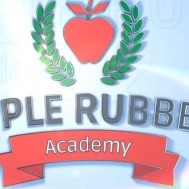We found that we were seeing a lot of engagement with our technical content from our Hot Topics blog — so we thought it would be a good idea to consolidate all the information in a central location that could be useful for readers.
Enter: Apple Rubber Academy.
Apple Rubber Academy is a five-chapter certification course that allows engineers to sharpen their skills on rubber materials, sealing best practices and engineering quality.
How it works: In each chapter of the academy, users will have access to three phases of content, a video and a 15-question quiz. Before earning the certification, engineers will have to complete a 75-question final exam. The certification courses and exam are free to take and do not expire.
5 engineering topics covered by Apple Rubber Academy
Apple Rubber Academy was created with all levels of experience and expertise in mind.
“Purchasing agents can get an in-depth overview of what they are purchasing, quality personnel can get an understanding of how tolerance is applied to O-Rings and rubber components, and managers can learn how to keep rubber components on the best possible design path,” John Tranquilli, materials manager, says.
To help engineers understand exactly what they can expect to get out of this certification, we broke it down by topic:
What is rubber?
- Explore the makeup of a rubber compounds.
- Learn how to measure durometer shore.
- Identify the link between ozone and rubber deterioration.
What are O-Rings?
- Understand how O-Rings work.
- See why O-Ring groove volume is important.
- Find the difference between MicrOrings, MacrOrings and EMI-shielded O-Rings.
What is molding?
- Follow the compression molding steps.
- Learn how liquid silicone molding works.
- Determine how to measure shrinkage.
How can you control quality?
- Get a breakdown of ASTM D2000.
- Discover how to measure rubber part geometry.
- Find tolerances for non-standard O-Rings.
What are the different seal types?
- Take a dive into static seals.
- Master dynamic seals.
- Identify how much force is needed to compress static axial seals and gaskets.
Ready to become the in-house engineer expert?
We thought we’d share the thoughts of Katie Olczak, Apple Rubber Academy student and PhD candidate for biochemical engineering at University of Florida.
“This course provides the perfect overview of the many aspects of the rubber manufacturing process, and how each step contributes to the finished product,” Olczak writes. “Illustrations throughout the course enabled me to have a clear comprehension of the material. Overall, it was a user-friendly experience that allowed me to see how important it is to have a working knowledge of every step of the manufacturing process.”
Think you’re ready for the challenge? Get started at applerubber.com/academy. We wish you the best of luck!
Have any questions about the certification? We’re here to help. Contact us or tweet us at @AppleRubber.
